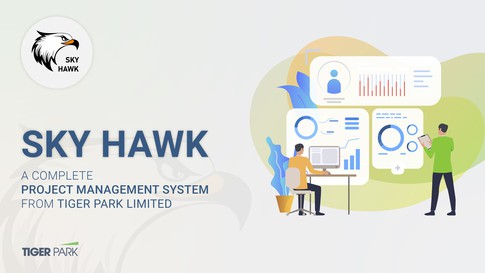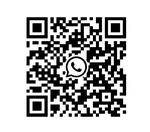TPL SKY HAWK

Our Project Monitoring System
- Mobile App - Android
- Dashboard
- Maps
- Push Notification
- Data Analysis
- 24/7 Support
- Training
Introduction:
Bangladesh is one of the most disaster-prone countries in the world. About one third of the country belongs to the low-lying coastal area with a coastline of over 700 km. The coastal zone is vulnerable to recurring cyclones and storm surges during monsoon seasons causing mass damage to property and loss of lives.
Coastal Embankment Improvement Project Phase-1 (CEIP-1) is a World Bank financed project being implemented by Bangladesh Water Development Board (BWDB) with a view to reduce the risk of damage to property and loss of lives from Cyclones and Storm surges at the coastal zone of Bangladesh. The project interventions focus on constructing climate resilient Embankments, Hydraulic structures and Protective works in 10 coastal polders to protect the people, their properties and as well as to improve agriculture by improving irrigation and reducing salinity intrusion.
The CEIP-1 Project Management Unit (CEIP-1 PMU) intends to develop an Information and Communication Technologies (ICT) Monitoring System for monitoring and visualization of the project progress and quality of work through field data collection using smartphones which should then be uploaded in a server for processing and then provide desired outputs accessible by authorized users using a web-browsers. It is noted that such a system cannot replace the tasks of a supervising Engineer as per FIDIC regulations and primarily aims on efficiency of the tasks of said Engineer and provides the CEIP-1 PMU with up to date of the field activities. The current CEIP-1 consists of 4 implementation of 10 polders under 2 packages; Package-1 consisting of Polders 32, 33, 35/1 and 35/3 and Package-2 consisting of Polders 39/2C, 40/2, 41/1, 43/2C, 47/2 and 48. This Terms of Reference relates to the development and implementation of a ICT Monitoring System for Polder 39/2C of Package-2 only, however, the System should be designed to allow for easy upgrading to 10 polders.
Business Goal:
Through this software, the organization has achieved a digital service delivery platform from which they are able to get physical status of construction of polders and various business intelligence reports. Previously, the Water Development Board used to get reports through a manual process and thus the process was lengthy, complicated and also expensive.
The overall objective of the software is as following:
-
To take part in enhancement of efficiency of CEIP-1 by providing a single-stop instrument ICT Monitoring System to monitor and manage the progress of construction, implementation of ESMP, provide visual images to live assess quality, and monitor the number and frequency of visits from field engineers;
-
To manage the design, development, deployment, and operationalization of the ICT monitoring system;
-
To provide technical support for a Project Monitoring Dashboard by designing, developing, analyzing and implement the system to integrate;
-
To enhance Monitoring Dashboard operation efficiency and to create better result by means of digitization;
-
To automatically add date and time, and GPS coordinates to form data and photos, which are transmitted upon submission to an online database.
-
The online database will be accessible to permitted users with appropriate hierarchy, where reports will be pinned to the physical interventions locations which are visible on an interactive map interface.
-
To monitor the number and frequency of visits from field engineers.
-
Offline data submission
-
To provide in-depth and real-time snapshots of project performance in a resource constrained environment monitor.
-
To automatically place pressure points on identified problem packages
Description:
BWDB PMS is the digital project management tool for Bangladesh Water Development Board (BWDB). BWDB PMS reduces your monitoring work and gives you more time to do what you do best. With simple and smart functions, the organization can work efficiently together in an automated process. This will help them to stay updated about the progress of the tasks from time to time. Along with the GPS coordinates one can track down the live location of tasks.
The features of the tool are as following:
-
Project
BWDB PMS makes it easier to keep track of what's happening in your projects.
-
Task lists
Never forget what to do! With a task list you can see what tasks you have been assigned to.
-
Reports
It has never been easier to keep track of everything you do in the field. You can simply submit your report straight from the field.
-
GPS tracking
We keep record of the GPS coordinates so that you can easily track down the location of the report submission.
Functional Requirement:
The project monitoring system has two major components - web portal and Android mobile application.
1.Web Portal
Login Page
After hitting the domain name in the web browser, the user will get the login page. Users are pre-registered into the system with the allowed permissions specific to the authority into the organization. After successful login, the user will get his dashboard. The data transferred to the server from the web browser in encrypted format through a secured socket layer.
User Dashboard
Users are going to get a custom dashboard according to the permissions given to them. They will be able to see the list of the projects and the tasks they have been assigned particularly. For example, a field engineer will be able to see the projects and the tasks that the administrator has assigned him to.
Project Dashboard
Users are going to get a project dashboard where they will be able to see the number of tasks and the number of reports that have been submitted against those tasks. The user will also get a description of the project along with the creator and location of the project.
Task List
Administrator will create tasks into the system. Tasks will have sub-tasks; subtasks might have even further sub-tasks. During creation of the tasks technical will predefine the predecessor tasks. The start & end date along with the task status and progress will also be shown in the tasks list. The role on which the task has been assigned will also be shown over there. Technical lead can see the list of the tasks anytime. He can search, edit the tasks. He can see detailed reports filtering by various time durations on a specific task.
Task Dashboard
In the task dashboard the user will be able to see the detail of the task. The number of sub-tasks and reports under the particular tasks will also be shown in the task dashboard. The progress of the certain task will be also shown beneath.
Report Submission
The assigned member will be able to submit a report. Initially they can save the report in the draft section and then can submit it later on. They can edit the reports saved in the draft. After submission the report will appear in the next role according to the hierarchy permission. Users are allowed to add multiple attachments in a single report.
Report Summary
The user will have a summarized view of the progress of all the tasks those are under the particular project. They can see the target amount along with the number of “completed” and “ongoing” amounts. There will also be an option to see the report in the bar graph option.
Report Dashboard
The user can see the list of the reports according to their status. There will be different fields like “draft”, “submitted”, “to approve” etc. in the report dashboard where the reports will be shown along with the name of the task against which the report has been submitted.
Report Gallery
In the report gallery all the images will be there according to their report. If there are multiple images against one report all will be shown in a slide show. By clicking the slide show, the user will get the detailed view of the image along with the caption, time and location.
2. Mobile Application
An Android mobile application will be available in the Google Play Store. Users can download and install the app. The app will support all the major versions of Android Operating System by Google.
After opening the app, there will be a splash page as well as a welcome page.
Only pre-registered users can use the app. The login credential information is the same both for web portal and mobile application. If a user changes password in the portal, the password for the app will be changed as well. User will have his custom dashboard according to the permission given to him. The user can submit a report through the app. The user can also do offline submission.
Project Images
Images will be only taken or uploaded by Android Mobile Application. Photo shooting by drone is not a part of the project. Already shot images by drone can be uploaded through the monitoring system. If images have GPS location as metadata, those GPS locations will be captured from the images and put into our database.
System Report
Team lead, deputy team lead and project directors will get detailed analytical reports on physical progress of each and every task. The analytical reports are only available in web portals in computers and laptops.


